Introduction
4am here back in Thailand and of course my body clock is all over the place (especially given how many of my 25 travel hours were spent awake marveling at watching content on the Apple Vision Pro!), so how better to make the most of being awake in the middle of the night than to get to work on this week’s newsletter?
DS June Lenker
Grand Seiko 4520-8000
Kicking off this week with a perennial favourite - the 4520-8000 in steel - and a listing that I, along with close to 100 other people, am keeping a close eye on.
Whilst not close to being the best condition example of this reference that I’ve come across, it has nonetheless weathered the 55+ years of its life extremely well. The dial just has a few light stains at the periphery, examples of which can be seen here -
Note also that the “S” in the applied Seiko has unfortunately been bent a little, but that’s about the only truly negative aspect of the watch from what I can see.
The case clearly hasn’t ever had any attempt to polish out the minor hairline scratches and little dings that are visible, and retains extremely sharp edges as one would always want on this reference. This would make for a great regular wearer.
Given the scratches on the case and bezel, it is unsurprising that the crystal is similarly marked, so you may want to take advantage of the third party (but contemporary) NOS crystal that can be found listed at a BiN price of 5,000 Yen here. Alternatively, if you’d rather pick up the genuine article, they do get listed from time to time at reasonable prices (the last example sold for 3,000 Yen three weeks ago).
Grand Seiko 5645-5000
The 5641- (time only) and 5645-5000’s are fascinating little references that in the not too distant past used to completely fly under the radar. However, relatively recently (I think it was a couple of years ago), Grand Seiko marketing decided to pronounce that the dial on these was the inspiration for the modern iconic “Snowflake” (actually, “Snow white” - but that’s a battle I conceded I will never win) references, starting with SBGA011 that launched in 2005.
Personally I believe this to be somewhat of a revisionist history, since I have not been able to track down that such a claim was ever made prior to the publishing of Grand Seiko’s “The story of Spring Drive in nine chapters”, which includes this rather bizarre paragraph in the 8th chapter.
“The 1971 dial sample that led to the birth of the 'Snowflake' dial was later found to have been made by Suwa Seikosha, now Seiko Epson, for a Grand Seiko model called 56GS. This mechanical Grand Seiko was not round, but tonneau-shaped, and the dial was not white, but finished in a golden color. The case was 18k yellow gold and designed to have a rocky texture just like the dial.”
Which makes for an interesting comparison to the spiel written for the modern SBGA211 -
“Inspired by the Hotaka mountains. Crafted in their shadow.
This Spring Drive classic is made by the craftsmen and women of the Shinshu Watch Studio in Japan’s Nagano Prefecture. The studio is surrounded by the Hotaka mountains that, for several months each year, are covered in snow. In the crisp, dry air, and when driven across the slopes by the wind, this snow has a special light and delicate quality that is captured in the subtly textured surface of the dial.”
Regardless of the veracity of the modern marketing story, the association of the vintage 564x-5000 dial with the modern Snow White (sorry, I just can’t help myself) has had quite an impact on the demand for the vintage piece.
When looking for one of these, it is very important to closely examine the dial for any signs of degredation. Here’s an example of the no-date (and arguably more desirable) 5641-5000 currently listed on Yahoo at a minimum bid price of 503,800 Yen that, whilst at first glance might look OK, shows the spotting that all too often plagues these -
Whilst the 5645-5000 that is listed this week is significantly better than that, there is still some slight degradation at the dial periphery between the 7 and 8 indices -
It is very slight though, and I suspect there will be quite a few collectors out there for whom this one is probably acceptable - it’s been more than 6 months since one of these sold on Yahoo.
Just a brief comment regarding the case - when you have cases such as this one that are hammered both on the top surface and the sides, it can be very difficult from low resolution images such as these to ascertain whether or not the case has been polished. This one looks pretty good to me - importantly the hand hammered finish is still very well defined, and certainly the caseback looks as if it hasn’t had any work done on it.
Finally, note that this watch does not come with its original 18K buckle, so if you are tempted to bid on it, do take that into account, because the buckles are extremely hard to come by.
Grand Seiko 5641-7000
The brushed finish to the case of the 564x-7000’s means that - like those on the aforementioned 564x-5000’s - it can be pretty difficult at times to tell whether or not the case has been refinished.
It’s probably fair to say that this is one of the least desirable references from the vintage Grand Seiko era, but when one turns up looking as good as this one does, it deserves a mention.
Introduced in the second volume of the Seiko 1971 catalogue, and remaining in the range until 1973, the 5641-7000 holds the distinction of being - at 37,000 Yen - the cheapest of all references in the 56GS range. And for those who appreciate the really geeky little factoids about Grand Seikos, it also holds the distinction of being the only steel cased automatic time only reference made in the vintage era.
I introduced the write up on this one with the statement that it can be very hard to tell whether or not a brushed case such as the one we see here has been refinished or not. The thing that give me some confidence that what we are seeing here is in fact “the real deal” is the condition of the caseback -
The etched/engraved/stamped details on the caseback remain exceptionally crisp, and it looks as if the original circular very finely brushed finish is in evidence, along with an immaculate caseback medallion.
At the end of the day, with this being very near the bottom of the list were you to rank the vintage Grand Seikos in order of desirability, it means that it’s not going to be hammering for a significant amount of money, and the chances of this reference being one day highly sought after is pretty low. Therefore, whether or not the case has been refinished is arguably a bit of a moot point. It looks great, it could be unpolished, but probably no need to invest too much concern into the matter.
One final consideration to make if you were to be looking to add one of these to your collection is that this reference was used for final the Toshiba 25 year employment anniversary watches in 1972 and 1973, so possibly you might want to consider waiting for one of those to turn up (or you could just ask me!).
It’s not a vintage Grand Seiko, but I like it
Sticking with all digital watches this week (I swear that early Japanese digital watches provide some of the absolute best value in watch collecting - especially when they are in great condition such as the ones featured below).
Just very brief comments on each one, given the number included!
Seiko 0644-8000
Introduced in volume 1 of the Seiko 1976 catalogue, just a great early digital watch. Not first with running seconds of course (and that’s the limit of its horological prowess - not even a date on this one), but a whole lot more reliable than the grail 0614’s. Originally available with either blue or black “dials”.
Seiko 0124-0030
The 0124-030 curiously doesn’t seem to feature in any of the Seiko catalogues from the mid 1970’s. Functionally its module is I believe almost identical to that of the 0124-010 that appears in the first volume of the 1975 catalogue (the first catalogue to feature digital watches).
The watch doesn’t have a running seconds - that window at the top shows the date - instead, there is a series of 6 LCD bars above the hours and minutes that shows the progress of the elapsed seconds (with the bar blinking during the 10 second period for which it represents, and turning solid once those 10 seconds have elapsed). The day of the week is indicated by an LCD box around a permanently printed initial letter of the weekday.
This one is in immaculate condition, and the seller has had it listed for quite some time now, slowly reducing the minimum bid asking price.
If nobody else jumps on this one in the closing minutes, I will certainly be picking it up - what’s not to love about a digital watch controlled entirely from a crown?!
Seiko M158-5000
Such was the rapid progress of development of digital watches, less than two years separate the time-only 0644-8000 featured above, and this reference that debuted in the second volume of Seiko’s 1977 catalogue.
LCD displays by now had moved on by now so that rather than having a box to highlight the day of the week, segmented displays were used instead (and note from the “T” that it was necessary for these to be more complex than those used for the numerals). On the 0644-8000, we get not just the time (including running seconds) on permanent display, but also the date and day of the week.
But the 0644’s real place in history is because it was Seiko’s (possibly “the”?) first ever digital world timer, with the timezone being indicated by small LCD markers that appear next to the city on the surround to the display, and an extra pair of LCD indicators around the dot between the day and date to highlight that you are looking at the time elsewhere in the world, as seen in this image from the listing -
Seiko 0138-5020
In the second volume of the 1978 catalogue, Seiko introduced a number of references based on the 0138 module, which was its first to feature a chronograph accurate to 1/100th of a second.
Although not in as good condition as the watches listed above, what really makes this particular variant of the 0138 so special is the remarkable integration of its bracelet and case.
I picked up an absolute mint one of these some time back, which found a new home with a UK collector. I’ve been looking to replace it ever since, and whilst this one isn’t quite good enough, it’s still worth a mention, because these are really hard to come by.
Here’s a photo of the one that got away…
Seiko C153-5011
Seiko’s first digital watch with a calculator was introduced in the first volume of the 1978 catalogue, and believe it or not, I can actually remember the publicity around this one when it launched. A watch with a fully fledged calculator - now that was the future!
The watch was evidently a huge commercial success, but 46 years later, it is pretty rare to come across a full set - with its all important pusher - in immaculate condition like the one offered here.
Frankly, the asking price of 69,990 is most definitely on the high side and I suspect this one might sit around for quite some time before selling, but considering its historical importance and condition, I can certainly imagine the day some time in the future when that price might be considered to have been a bargain.
DCI Daniel Hegarty
Grand Seiko 5646-7010
Perhaps I’m being a little harsh in including this one in the bad guys section, but the listing is so egregious I think it deserves it.
Just because you attach a modern Wako swing tag and a modern Grand Seiko swing tag (slipped into which is a little slip of paper upon which you penned a few characters yourself) to a watch, it doesn’t make it a “Ginza Wako limited edition”.
I mean - really. Would anyone be so daft as to fall for that? I can only assume the seller is hoping it to be the case.
It doesn’t get any better when you start taking a closer look. The watch is described as being in “super mint condition”. At first, I thought with the horrendously overexposed and high contrast images it wouldn’t be possible to tell whether the case was indeed mint, or whether it had received some “attention” prior to the watch being offered for sale. In most of the images, it is almost impossible to assess the true condition of the case, but fortunately there is one that gives the game away -
Those to me look suspiciously like scratches and dings that have had an attempt to polish them out.
Bizarrely in his description the seller claims -
This is a limited edition sold only at Ginza WAKO, which is extremely rare with a white pearl sand dial (usually a white silver radiation dial)!
Maybe it’s just a poor translation from the Japanese, but certainly there is no visible texture to the dial whatsoever, and it is not correct to claim that “usually” these references have a “white silver radiation” (i.e. “sunburst”) dial. If anything, the matte white dialed 564x-7010’s are more common than the silvered ones.
This seller has shifted quite a few pieces from his “collection of about 1,000 domestically produced watches” in the past, and some have actually been pretty good watches. Not entirely sure what is going on with this one, but I think whoever ends up getting it will be sorely disappointed.
Grand Seiko 4420-9000 late dial
Another poorly redone dialed 44GS from our usual chap whose auctions should always be ignored.
Redone coloured dial summary
I close with the usual copy/pasted reminder to steer clear of any vintage Grand Seikos with coloured dials similar to the above. This is not a comprehensive photo - there are many references that get this “treatment”, so be careful out there.
It’s interesting to note that this week, at the time of writing, three of the top five listings in descending order of number of bids in the Yahoo Japan Grand Seiko category are for watches with dials such as those seen above, and it’s clear that those behind producing these are diversifying in their colour ranges.
By all means click on the images below if you want to check out the auctions, but don’t say you weren’t warned!










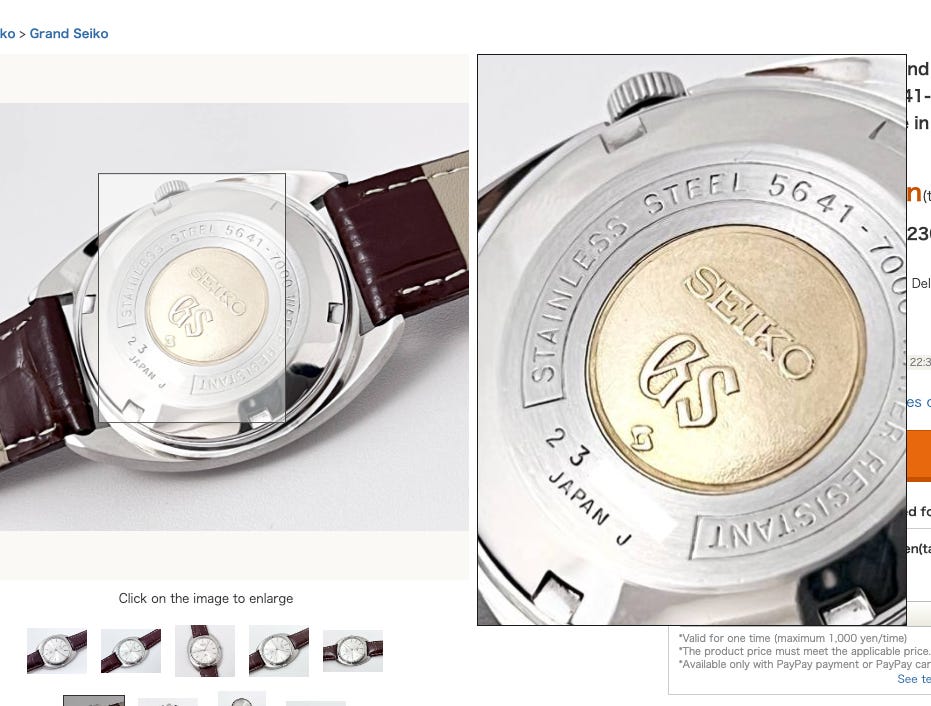
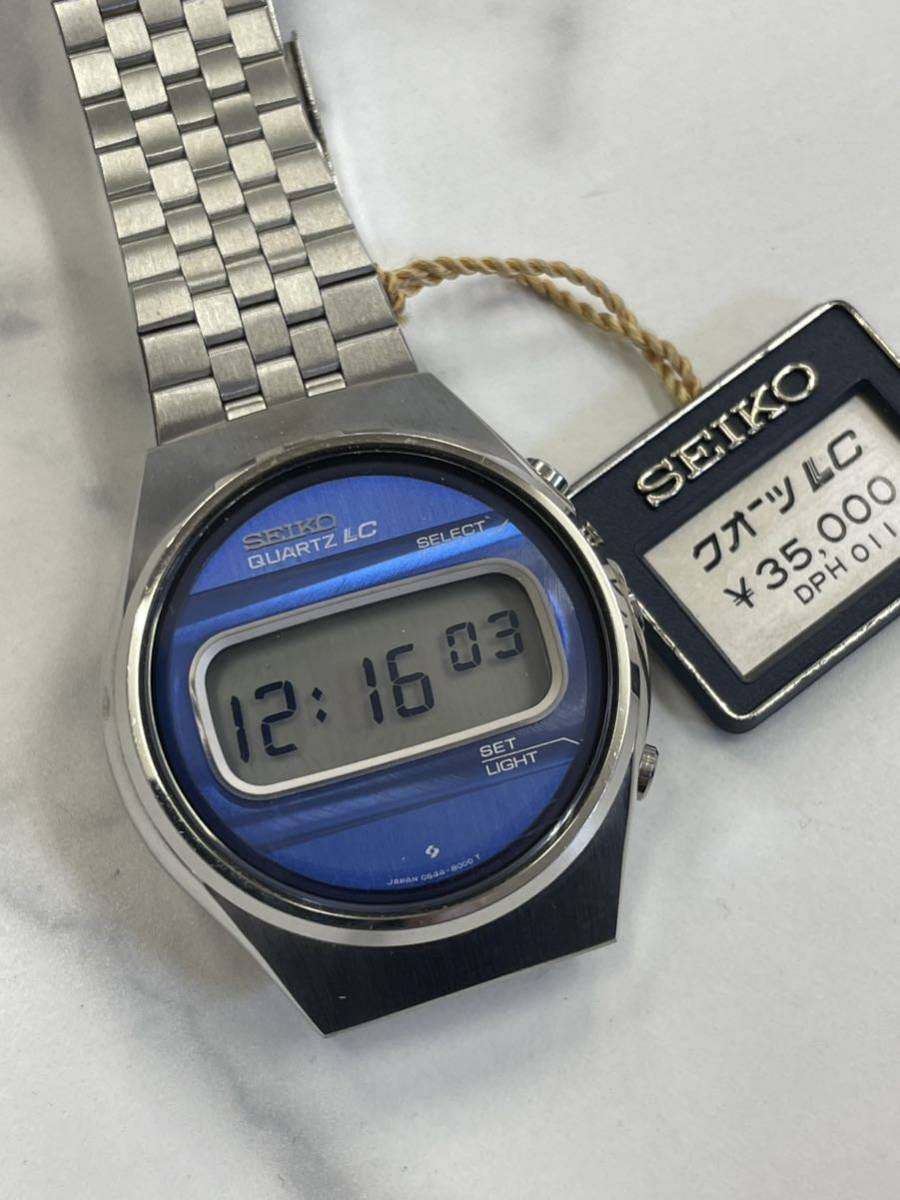
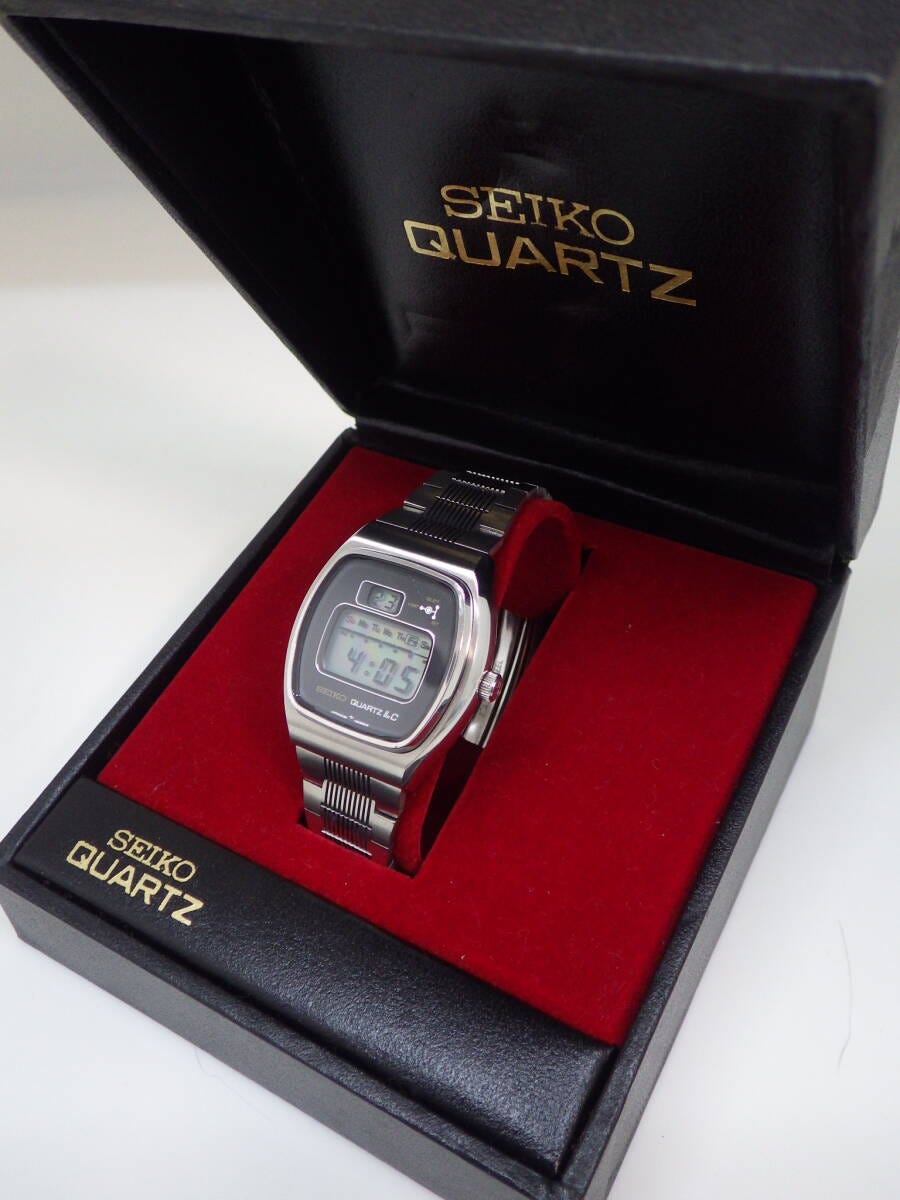

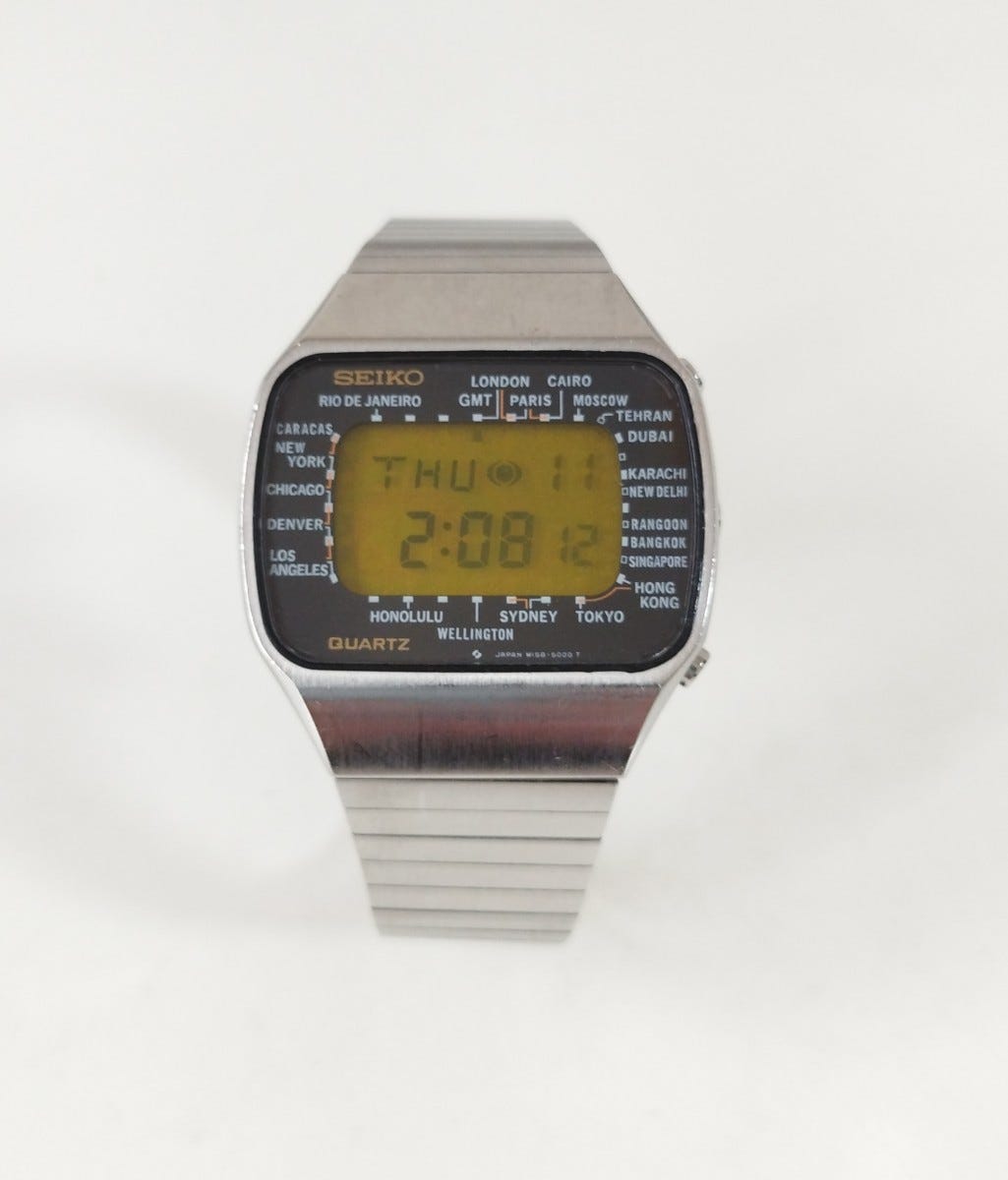
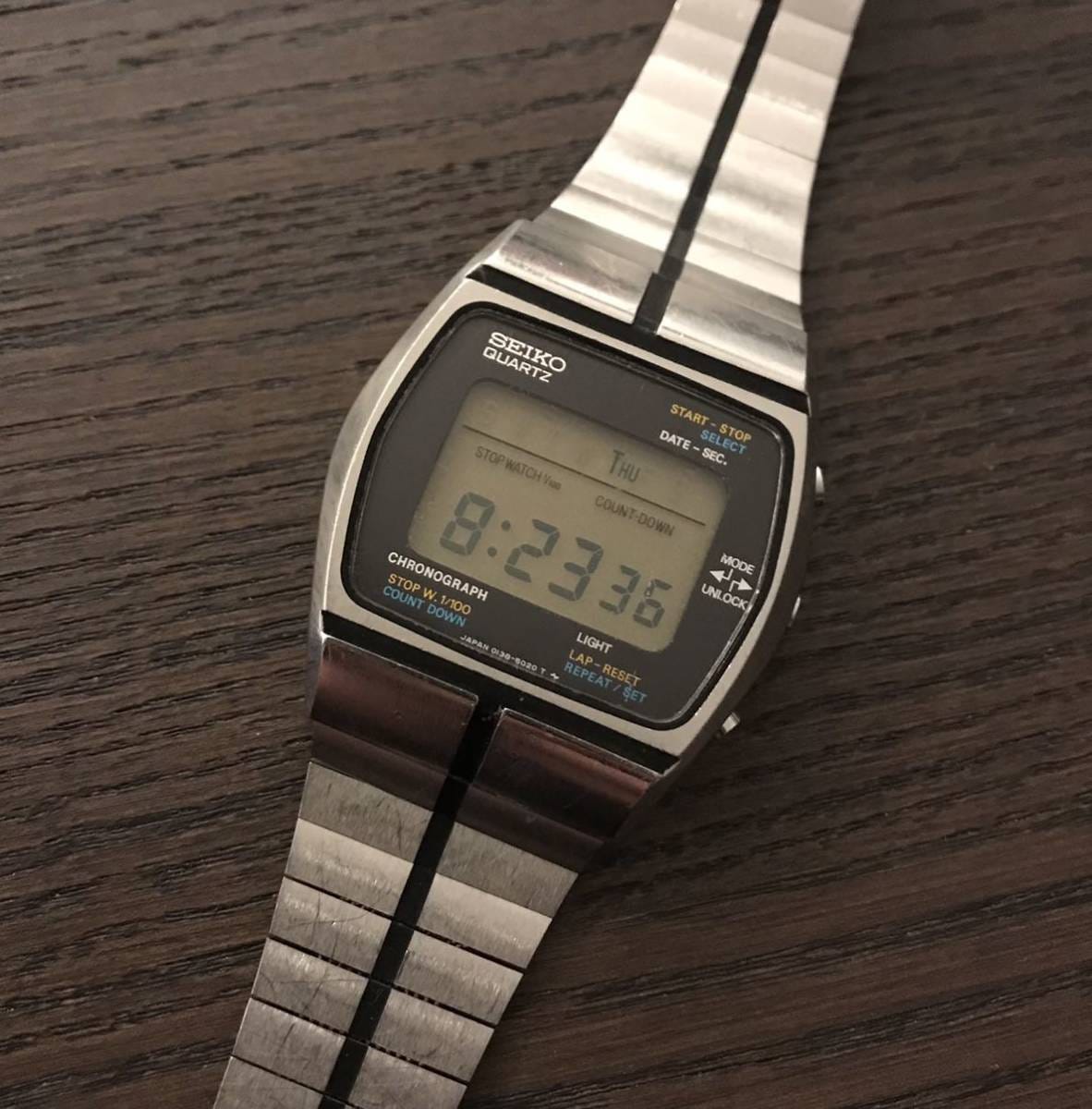
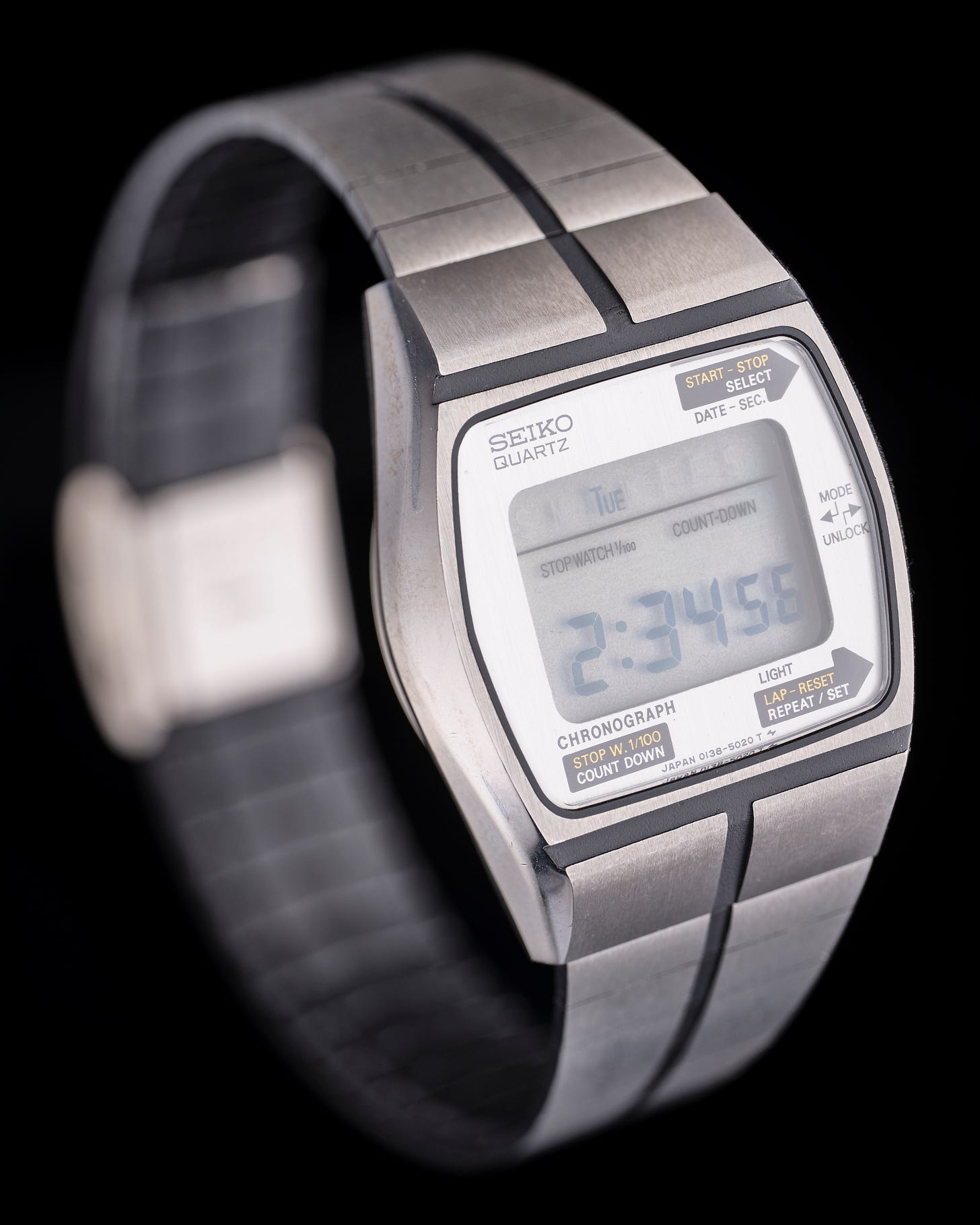
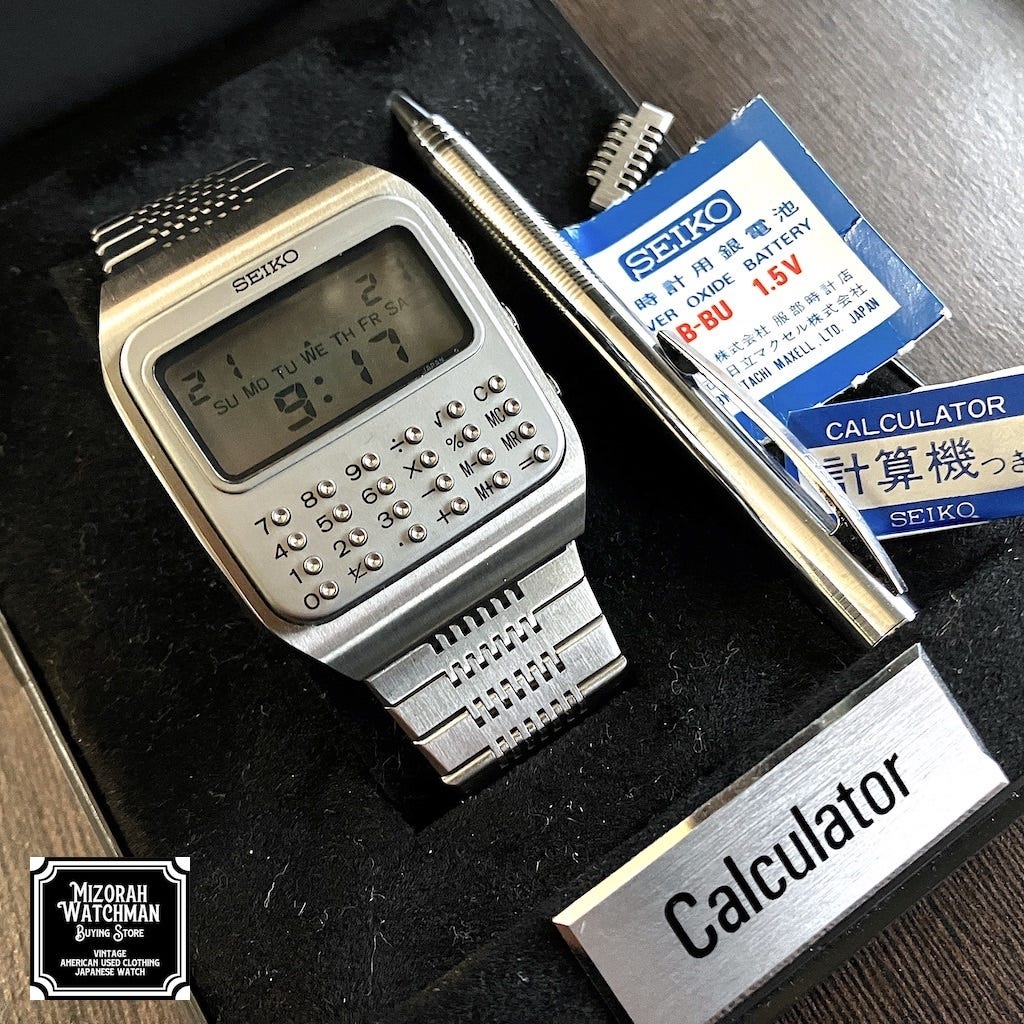
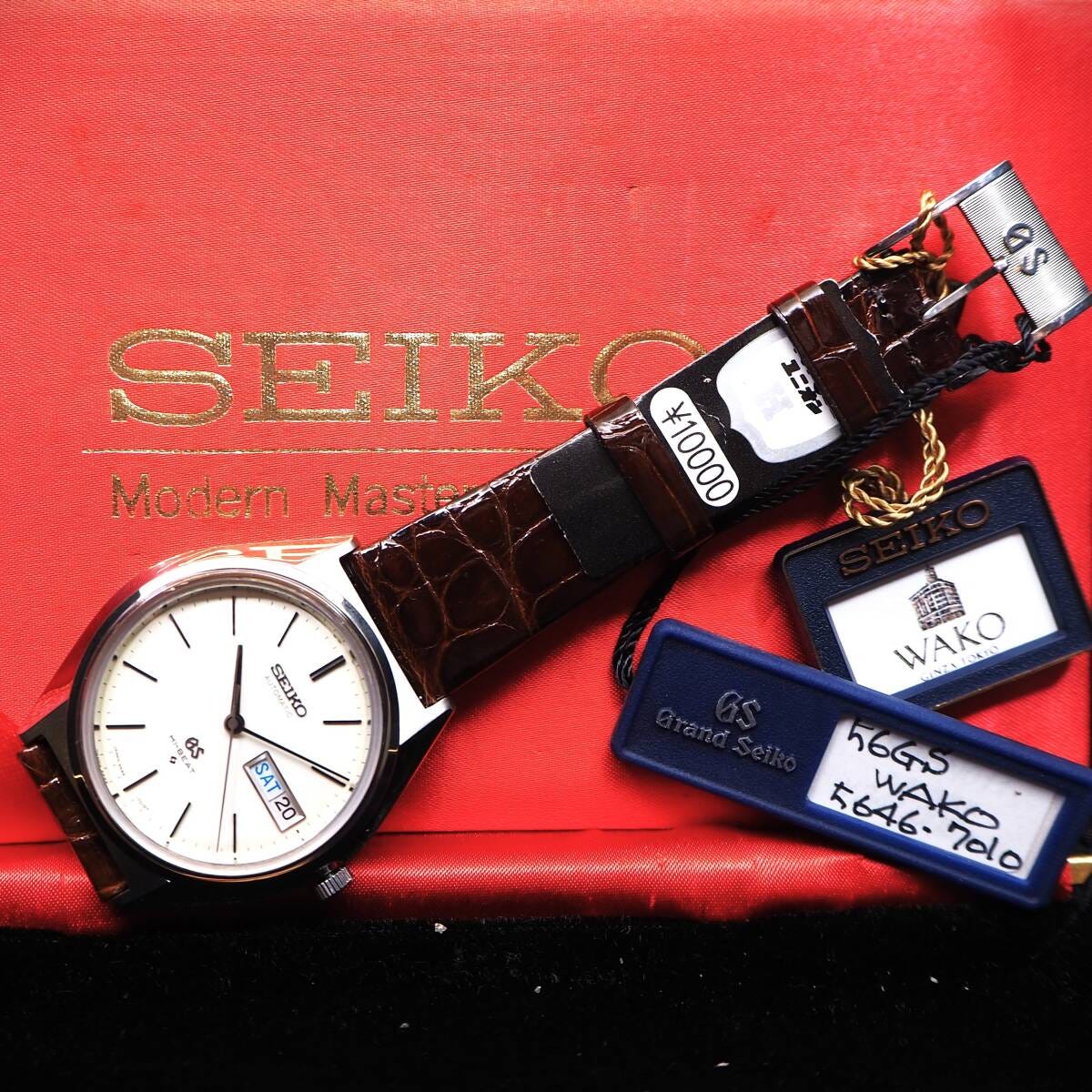

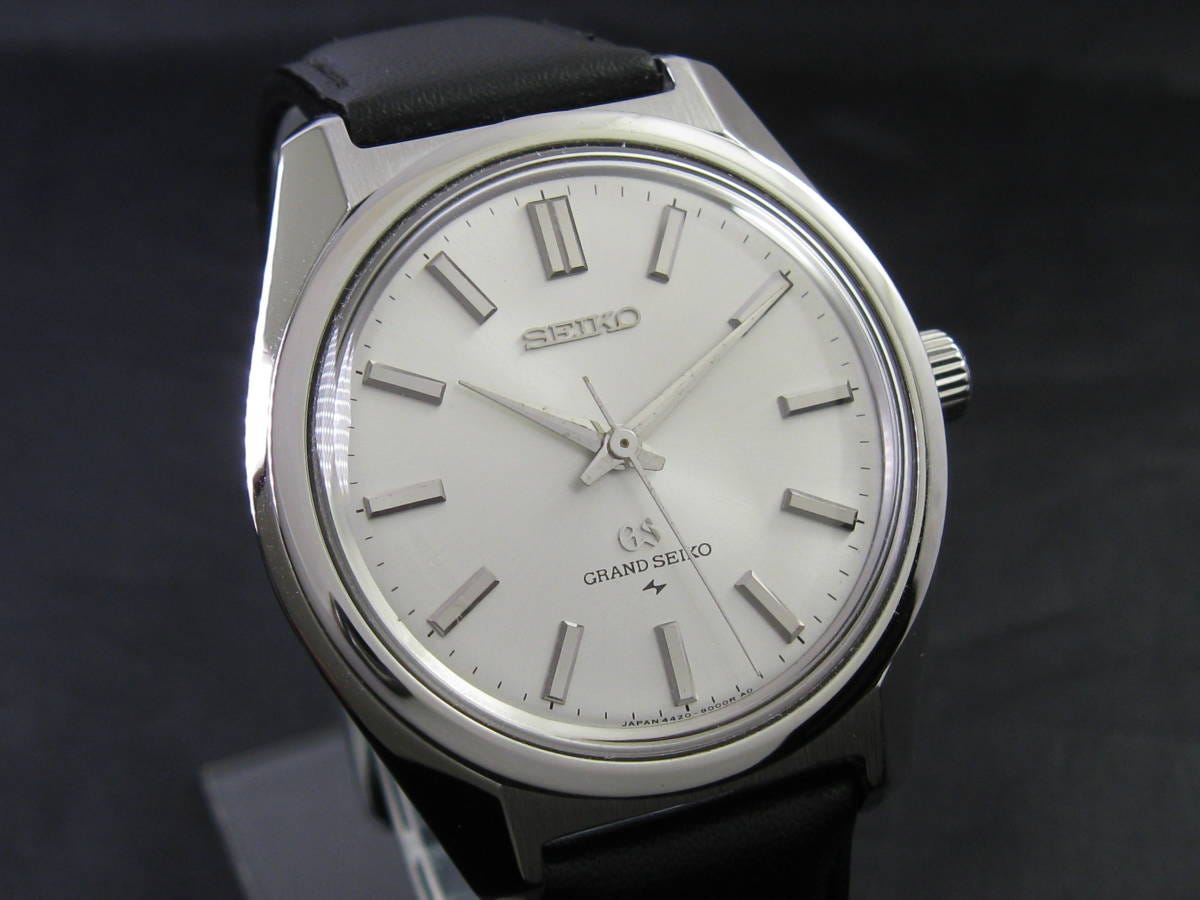
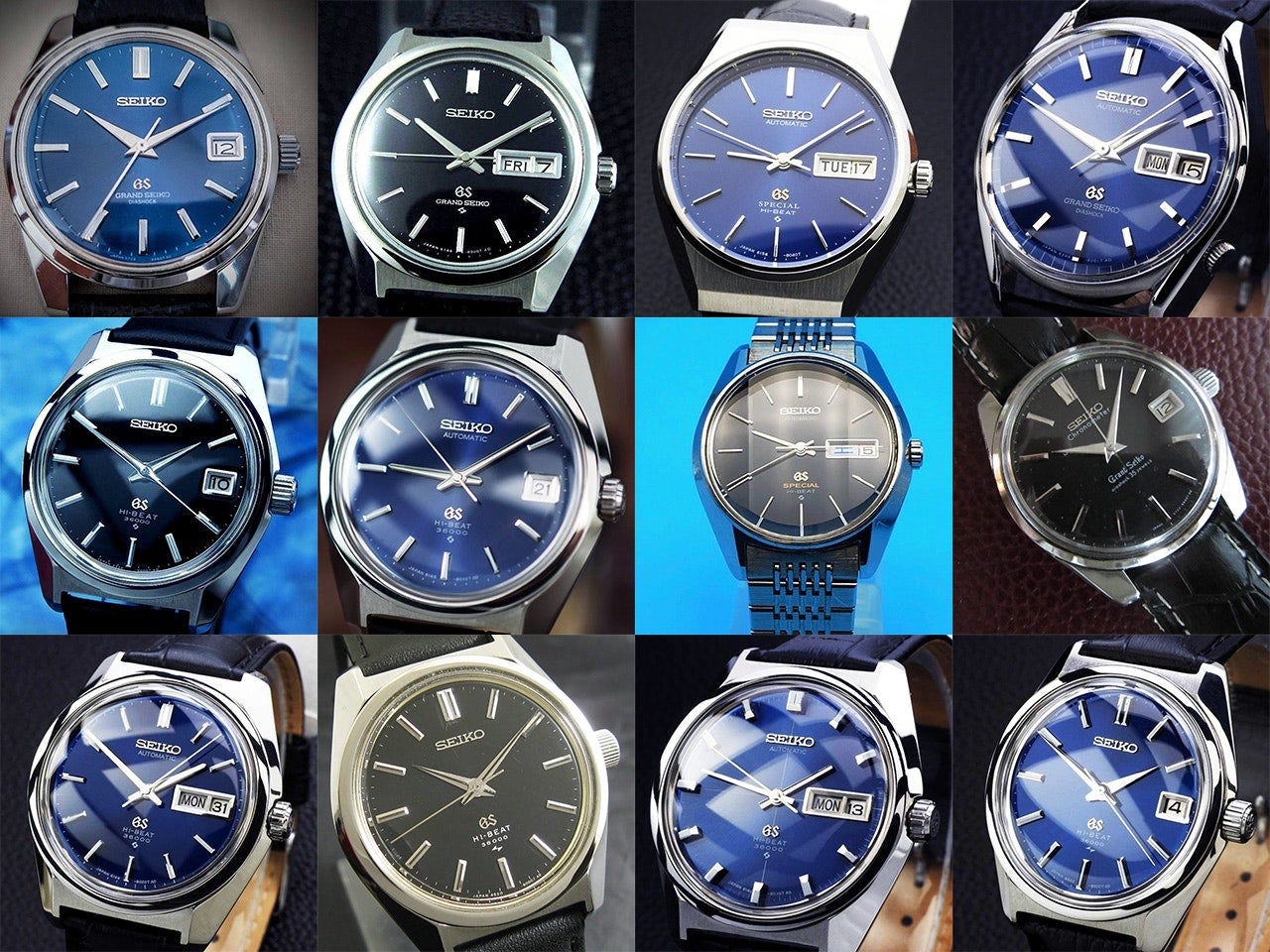
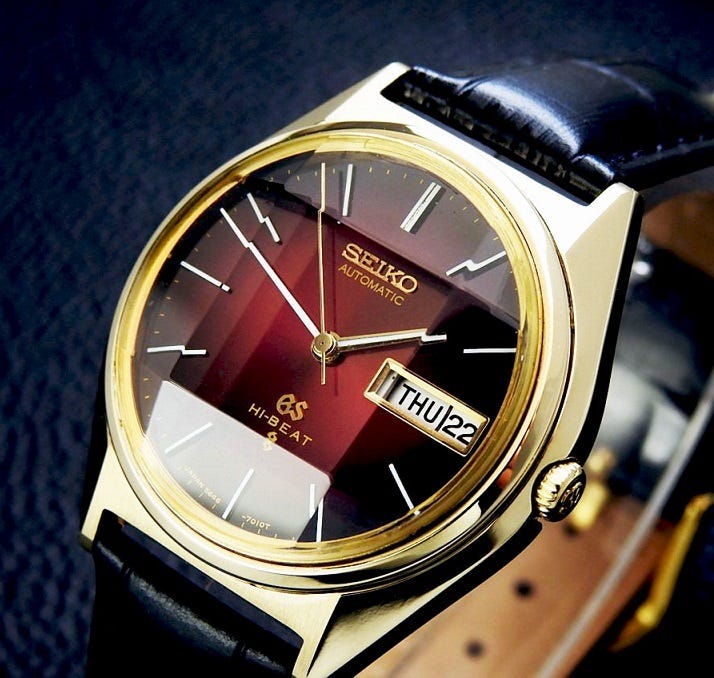
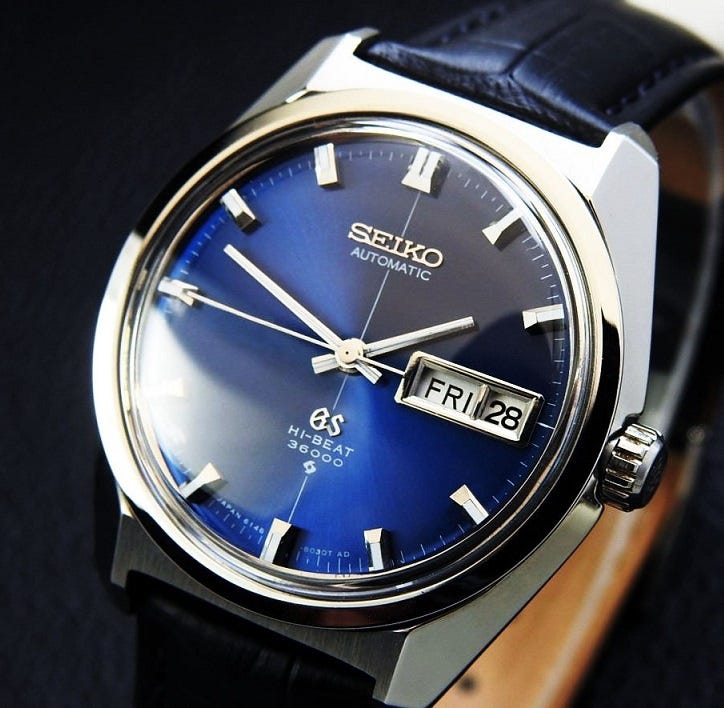
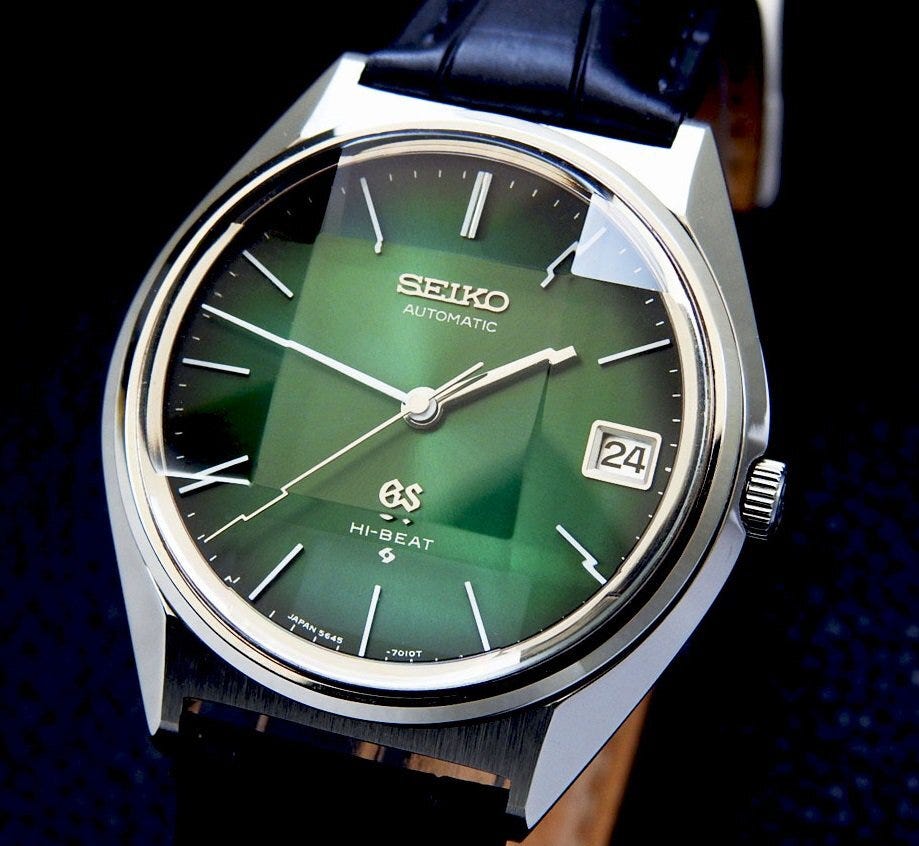
I appreciate the addition of the LCD models! Very cool!
Instant validity for the entire ass end of an era, 615x included.